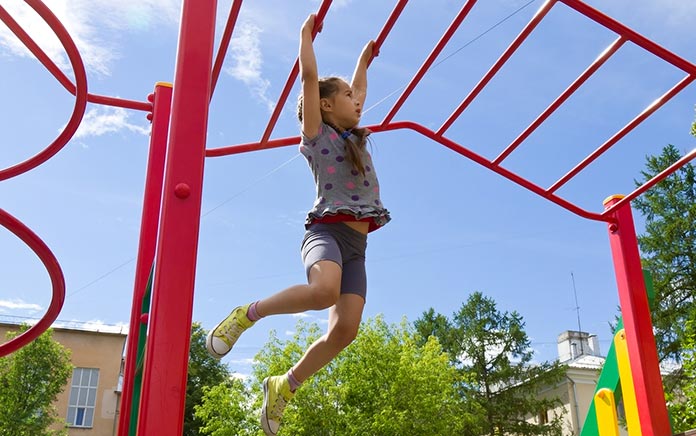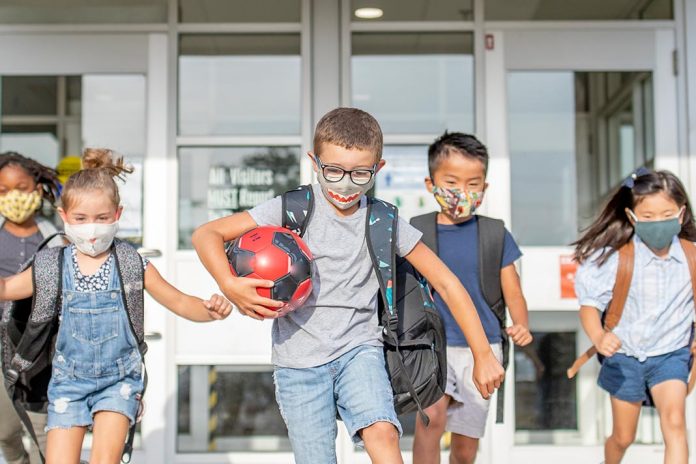Educator, Julia Knight, explores how schools can prevent anxiety in students upon their return to school.
As we edge closer to the end of the pandemic, many of us hope that things have changed for the better. For many the pandemic has encouraged us all to revaluate what is important. This has certainly been the case in education. Schools were very quick to adapt to legislation and mandates from the authorities about social distancing but are we ready for the consequences?
Socially distancing and school closures have increased anxiety and mental health concerns in young people; so, what can schools do to mitigate these side effects of the pandemic?
The answer is quite simple. Improve their break times. One aspect of education that has been vastly overlooked in recent times is the school day and the way in which it is organised. Now I’m not talking about flexi hours for students or realising the dreams of teens and having a 10 am start time, but increasing opportunities for play and socialising.
Since the mid-90s, schools across the world have reduced their break times to accommodate more learning; to provide more time in a classroom, but should parents be concerned? On average the reduction has seen primary school children lose 45 minutes of playtime whilst secondary school children have lost 65 minutes per week. This research conducted by University College London Institute of Education looked at the impact on children’s wellbeing and found that the benefits of play or break time can be overwhelmingly positive.
As many teachers and parents know, there are aspects of life that cannot be taught in a classroom- social skills such as friendship and conflict management; leadership and team building skills through activities organised and led by students themselves. Then there is, of course, the physical exercise gains that are enormously beneficial to children – its impact isn’t just on physical health but mental health too.
In a study by Princeton University which was published in the Journal of Neuroscience, researchers found that more exercise increased calmness and reduced anxiety. This is good news for learners – if anxiety is reduced, learning is likely to be more effective having a school-wide benefit and impact.
 Schools should provide outdoor and indoor spaces for children’s recreation that are sizeable and suitable. The spaces should provide opportunities for exercise such as a grassy area for ball games, climbing frames and other outdoor equipment to challenge children’s natural curiosity as well as spaces for quiet reflection.
Schools should provide outdoor and indoor spaces for children’s recreation that are sizeable and suitable. The spaces should provide opportunities for exercise such as a grassy area for ball games, climbing frames and other outdoor equipment to challenge children’s natural curiosity as well as spaces for quiet reflection.
 Schools who value wellbeing also value and understand the impact and importance of recreation time too. Break times should provide opportunities for children to collect and eat their food, to chat with friends and to decompress from the previous session of learning. By increasing breaktimes, schools are providing longer periods of exercise and time away from studying so that children can enjoy school. If parents think back to their school days, what do they remember? I am sure it wasn’t extra maths P2 Tuesdays but playing with their friends.
Schools who value wellbeing also value and understand the impact and importance of recreation time too. Break times should provide opportunities for children to collect and eat their food, to chat with friends and to decompress from the previous session of learning. By increasing breaktimes, schools are providing longer periods of exercise and time away from studying so that children can enjoy school. If parents think back to their school days, what do they remember? I am sure it wasn’t extra maths P2 Tuesdays but playing with their friends.
Independent schools in the UK have on average around 20% of the school day given to break times compared to 16% in the state sector. This is significant because international schools often model themselves on independent schools and parents expect similar outcomes academically.
Parents can ask questions such as how long is break? Where do the children eat? How much time do they have for playtime? What activities are in place for them to do?
Schools which have longer breaktimes are actually improving the wellbeing of the children in their care balancing social and emotional well-being with the academics.
Julia Knight has been teaching for 18 years in London, Bangkok and, is now a principal in Bahrain. She writes for many education magazines worldwide and offers teacher training and consultancy. You can follow her on Twitter @KnightWilliams.


































